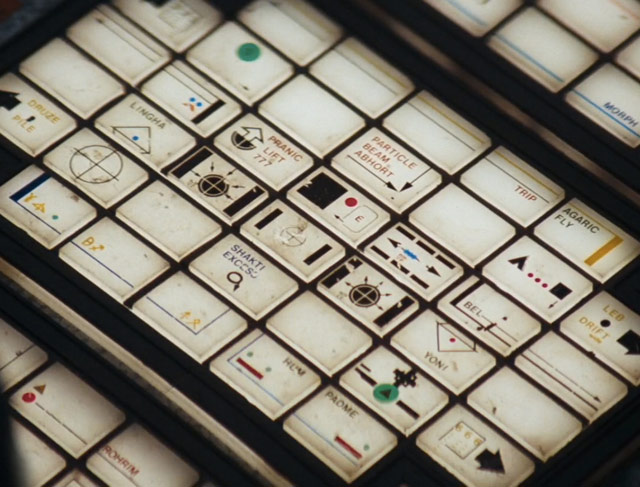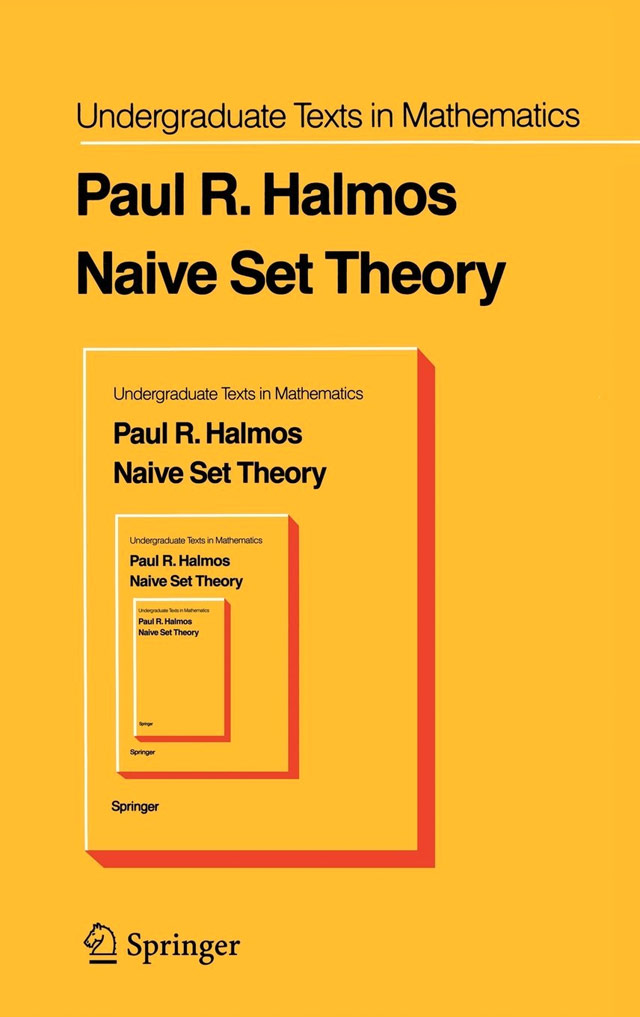The excellent Typeset in the Future covers the typography in Ridley Scott's Alien.

Previously 2001: A Space Odyssey and Moon. (via df)
Tags: Alien movies Ridley Scott typographyThe excellent Typeset in the Future covers the typography in Ridley Scott's Alien.

Previously 2001: A Space Odyssey and Moon. (via df)
Tags: Alien movies Ridley Scott typographyAccording to testing by the folks at America's Test Kitchen, you should not be thawing out your frozen steaks before you cook them. Mind. Blown. Into. Tiny. Pieces. Sweep. Me. Up. Pls.
Conventional wisdom holds that frozen steaks should be thawed before cooking, but we wondered if steaks could be cooked straight from the freezer. Cook's Illustrated Senior Editor Dan Souza explains our cooking experiments.
They also apparently more-or-less deep fry their steak? Is that a thing that we should be doing? (via digg)
Tags: cooking food videoThe book cover for Naive Set Theory by Paul Halmos is so so good:

The cover is a riff on, I think, Russell's Paradox, a problem with naive set theory described by Bertrand Russell in 1901 about whether sets can contain themselves.
Russell's paradox is based on examples like this: Consider a group of barbers who shave only those men who do not shave themselves. Suppose there is a barber in this collection who does not shave himself; then by the definition of the collection, he must shave himself. But no barber in the collection can shave himself. (If so, he would be a man who does shave men who shave themselves.)
Reminds me of David Pearson's genius cover for Benjamin's The Work of Art in the Age of Mechanical Reproduction.
Tags: Bertrand Russell books design mathematicsI don’t want to spoil anything, so I’ll just say this is one you don’t want to miss.
 Image courtesy of Grant Hutchinson.
Image courtesy of Grant Hutchinson.
William Gibson’s Pattern Recognition is likely a familiar novel to readers of Snarkmarket – if not in content, then in its tone and its concerns. It is a tale of Cayce Pollard, a strange marketing-savant with a literal sixth-sense for design, and her quest to solve the mystery of both “the footage” – a series of loosely connected video fragments released anonymously online – and her father’s disappearance on September 11, 2001.
Among the things that struck me about the text was the fuzziness of the real — the fact that the mysterious videos at the centre of the story hover in an odd liminal space of being both true and false, referring to “reality” and not. It’s an aspect of the text intimately tied to digital tech – to the novel’s sense of the “virtual” nature of a virtual world, an approach which can often produce a split between an assumed real thing and its digital corolloary (think, regardless of how you feel about the implied hierarchy, of the book vs. the ebook, the face-to-face interaction vs. the online one etc).
As a result, it felt like certain things in the novel that were solid, physical, heavy were almost like a relief – a kind of in-focus reprieve from a world otherwise viewed through a kaleidoscope. Protagonist Cayce is obsessed with signs, and systems of meaning – and remaining ambivalently illegible – but also takes comfort in the unambiguous weight of a locked door, her crisp, black Rickson’s jacket, the strain on her muscles during a morning’s workout.
And then there was the Liechtensteinian calculator – the Curta.
The Curta is a mechanical calculator, but to say that seems to do it injustice. It can perform addition, subtraction, multiplication and division, and even square roots and more. Gibson describes it as “heavy, dense, knurled for gripping”, seemingly “executed by a small-arms manufacturer” while “the sensation of its operation is best likened to that of winding a fine thirty-five millimeter camera.” It also just looks really freaking cool. Like a hand grenade of math.
Watch this video relating its history and explaining how it works. Because, though I hesitate to use the phrase, it will blow your mind. And if that wasn’t enough, its inventor Curt Herzstark, perfected it while interned in a concentration camp during the Second World War. Yeah.
This came to mind because I was double-checking a reference today for a dissertation chapter which is partly about Pattern Recognition. While writing that torpid thing, I apparently thought that “as a calculator, [the Curta] is a thing bound up in ‘non-significatory’ actions, a material object meant to produce ‘immaterial answers’” – but that this “pre-digital device is meant to perform functions now hopelessly intertwined with electronic technology, and thus is itself a fetishistic sign of pre-internet technology and industrial manufacturing.”
Now I think that may be an uncharitable read.
I’ve been thinking a lot lately about the relationship between objects and activities. It’s something obviously affected by digitally-enabled multi-functionality. The digital object doesn’t so much have “a function” as a series of functions under an umbrella of one or two metafunctions – to wit, “this device is what I use to keep up to date” or “my tablet is what I use to read everything from the news to novels.” The association between object and function that was often one-to-one has become multiplied, perhaps receding into infinity (what, really, is the limit of what you can do with your iPhone?)
But more than that, though I know it sounds like mere tautology, the function of physical devices is related to their physicality. How they operate and what they do in 3D space is dependent on the manner in which they occupy that space. Maybe it’s my digitally-addled brain that needs reminding of that, but it somehow feels like a point worth repeating. And the Curta, in a world in which even the scientific calculator feels arcane, just seems so fascinatingly, resoundingly, undeniably physical. And perhaps it’s because of that physicality, but something about it thus seems sopurposeful.
It is easy to get caught up in romanticizing the object we can touch, just as we here on Snarkmarket can occasionally get a bit too attached to pixels you can interact with and manipulate. But I’ve been wondering lately if, beyond the chatter about the attention economy or a supposed “inherent” nature to print or screens, there isn’t something pleasurable in the object that performs but one function. Physical or digital, it doesn’t matter. All I mean to ask is if there isn’t something to be enjoyed in a conscious minimalism of function rather than form – that one might find relief in the simplicity of a one-to-one relationship between an activity and a thing.